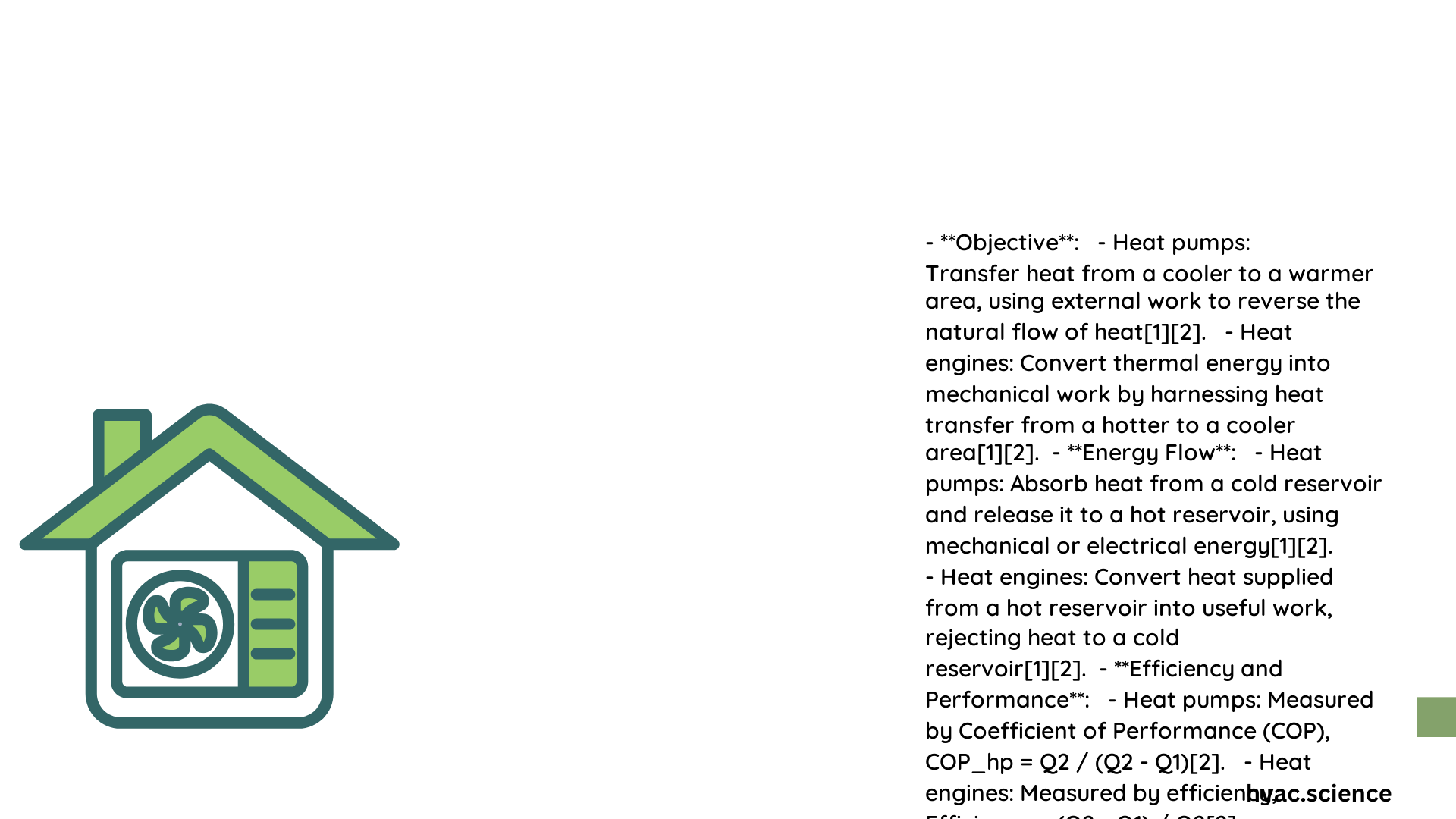Heat pumps and heat engines represent two distinct thermodynamic systems with unique energy transfer mechanisms. While both involve heat movement and work, they fundamentally differ in purpose, direction of energy transfer, and performance metrics. Heat pumps transfer thermal energy from cooler to warmer spaces using external work, whereas heat engines convert thermal energy into mechanical work by transferring heat from hot to cold reservoirs.
What Are the Basic Operational Principles of Heat Pumps and Heat Engines?
Heat Pump Fundamental Mechanics
Heat pumps operate through a sophisticated refrigeration cycle designed to move thermal energy against natural temperature gradients. The core components include:
- Evaporator: Absorbs heat from the cold source
- Compressor: Increases refrigerant temperature and pressure
- Condenser: Releases absorbed heat to the warm space
- Expansion Valve: Reduces refrigerant pressure
Key Performance Characteristics
| Parameter | Heat Pump | Heat Engine |
|---|---|---|
| Energy Transfer | Cold to Hot | Hot to Cold |
| Primary Goal | Heating/Cooling | Mechanical Work |
| Efficiency Metric | Coefficient of Performance (COP) | Thermal Efficiency |
Heat Engine Core Principles
Heat engines transform thermal energy into mechanical work through a systematic process of heat transfer between temperature reservoirs. The primary mechanisms include:
- Heat Absorption: Extracting thermal energy from a hot source
- Work Generation: Converting thermal energy into mechanical motion
- Heat Rejection: Releasing remaining thermal energy to a cold reservoir
How Do Efficiency Metrics Differ Between Heat Pumps and Heat Engines?

Coefficient of Performance (COP) for Heat Pumps
The heat pump’s efficiency is calculated using the COP formula:
[
\text{COP}_{\text{hp}} = \frac{Q_h}{W}
]
Where:
– (Q_h) represents heat transferred to the warm space
– (W) indicates work input
Thermal Efficiency for Heat Engines
Heat engine efficiency is determined by:
[
\text{Efficiency} = \frac{W}{Q_h} = 1 – \left(\frac{T_c}{T_h}\right)
]
Where:
– (T_c) is the cold reservoir temperature
– (T_h) is the hot reservoir temperature
What Are the Practical Applications and Limitations?
Heat Pump Applications
- Residential heating and cooling
- Industrial process temperature control
- Geothermal energy extraction
- Water heating systems
Heat Engine Applications
- Electricity generation
- Automotive propulsion
- Industrial machinery
- Power plant operations
What Challenges Impact Their Performance?
Heat Pump Constraints
- Reduced efficiency in extreme temperature variations
- Higher initial installation costs
- Dependency on electrical energy
- Refrigerant environmental considerations
Heat Engine Limitations
- Inherent thermodynamic efficiency restrictions
- Material durability at high temperatures
- Mechanical friction losses
- Fuel consumption and emissions
Conclusion
Understanding the nuanced differences between heat pumps and heat engines reveals their unique roles in energy transfer and conversion. While both systems operate on thermodynamic principles, their specific applications and performance characteristics make them suitable for distinct technological requirements.
